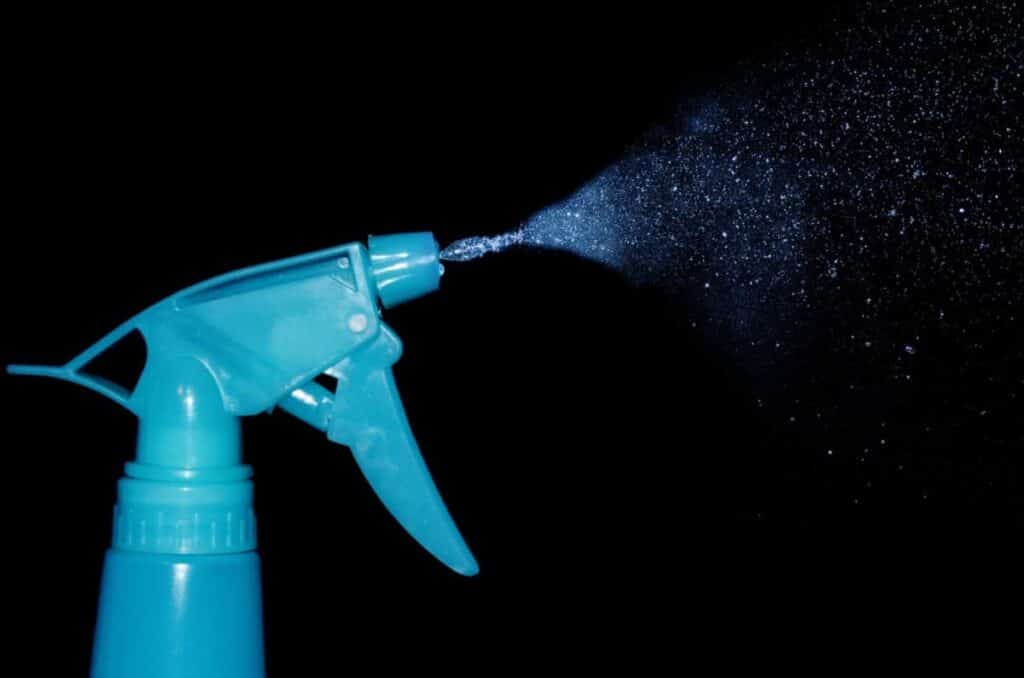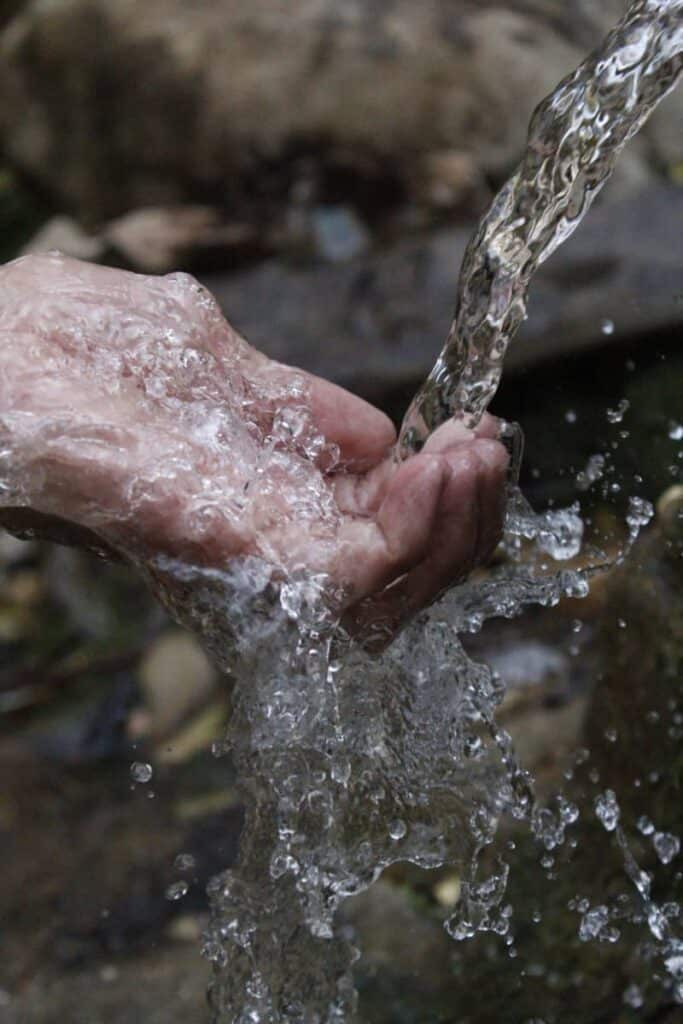Unsure how to clean your camp cot? We can help you to do it right, without damaging it!

Cleaning your camp cot is simpler than it may seem. Depending on the material it’s made with, you can use a gentle detergent, dish soap, or fabric cleaner to get the job done. Just make sure that you avoid ingredients like bleach or ammonia, which can be too rough on some cot materials.
While cleaning your camp cot doesn’t need to be a difficult process, it is worth knowing what to use on the different materials a camp cot is made up of. Continue on and you’ll find out how to best clean all of the most popular camping cot materials, including the frames!
By the way, as an Amazon Associate, I earn when buying qualified products through links on my site.
What Materials Are Used to Make Camping Cots?
The majority of the time, camping cots are made from canvas, nylon, or polyester. From time to time, you might find a cot that is made of a different material or a combination of materials. However, most cots fall under those three categories pretty neatly.
However, knowing what to clean your cots with is only half the battle, knowing how to clean the camping cot you choose effectively is also important.
How to Clean The Covering Of Your Cot
Camping cots are often made using the three materials listed above. Depending on the kind of cot you use, you may find that there are some different options available for getting it clean. In most cases, what’s most important is ensuring that the detergent you use is mild.
What on earth is a mild detergent?
Dish soap is considered a “mild” detergent–you can add a few drops of detergent in a cup of water and use that to wash your cot.
Even stronger detergents, such as what you use in your laundry can work fine, but be more careful–start with the milder detergents first (dish soap), and make sure to dilute your laundry soap. Laundry soap can also be tougher on your hands so use gloves to keep your hands protected.
Be super careful about any cleaning products with bleach or ammonia, they can discolor the fabric, and more importantly, they can weakend the fabric causing it it to rip prematurely.
As with any venture in cleaning a material you’re not sure how it will react, always find a non-conspicuous spot first and test your soap to make sure you don’t discolor or harm your fabric.
Polyester Cots
Polyester cots typically only require some warm water and a mild detergent for effective cleaning. Mild detergents don’t include intense cleaners like bleach, and it’s generally a wise choice to dilute even a mild detergent before you start using it on your cot.
The idea is to be as gentle as possible on the cot material while still removing any dirt or germs that may be on it. Once you’ve finished cleaning it, make sure to give the cot plenty of time to dry so that it doesn’t end up growing mold when you’ve placed it in storage.
Nylon Cots
Much like polyester cots, it’s important to be careful while cleaning nylon cots. One of the top things to avoid using on your nylon cot is bleach. Instead, use a gentle detergent (dish soap) diluted with enough water that it won’t have too much of an effect on the cot.
On top of that, you’ll want to use something pretty soft to clean it with. You can make use of something like a gentle brush while you’re scrubbing the cot. In some cases, you may be able to wash nylon covering in the washing machine, but you’ll need to take extra care and make sure the machine is set to delicate.
A delicate clothing bag, for example this one you can find on Amazon, is used to put any kind of fabric that is sensitive and can be damaged by a washing machine.
Furthermore, I’d really try not use any sensitive fabric in a top-loading washing machine. The agitator is known to be harder on clothing than a front-loading washing machine.
Canvas Cots
Canvas cots are known to be quite durable, but it’s still worth your time to be gentle while cleaning it. Naturally, you want a cot to last quite a while if you’re going to invest in one.
What is worth noting is that you have a couple more cleaning options for canvas than you do with other materials. Both dish soap and fabric cleaner can be used on a canvas cot. Just make sure that you include warm water and get all the soap or cleaner rinsed off when you’re done. Some campers also like to use specialized sanitizing products on their cot.
As an additional note– make sure your canvas is completely, 100% dry. Canvas can be treated with anti-mold protection, but it’s best not to push it. Canvas can be destroyed by mold and so it’s very important to let it dry completely.
How to Clean Your Cot Frame
Typically, cleaning the cot frame is simpler than cleaning the covering material. Many cot frames are made from aluminum or similar kinds of metal. In most cases, they really only need a quick wipe down in order to be ready to be stored or used again.
When it comes time to clean the frame and poles, Lysol wipes are a fantastic choice. That said, you can also just use the detergent or soap you used for cleaning the fabric. As long as you dry the frame off well after, it shouldn’t cause any issues for your cot to be washed and rinsed.
Additionally, an aluminum frame doesn’t promise that all the included hardware is aluminum as well. Just to be safe, make sure you dry off what you clean.
Tips For Preventing a Dirty Cot
The best way to keep your cot clean is to prevent it from getting too dirty from the start. Naturally, there’s only so much you can do to keep a camping cot from getting dirty. It’s still going to need cleaning from time to time, but at the very least you’ll be able to avoid turning that cleaning session into an intense scrubbing session.
Protect It From Weather: Take Off Those Shoes!
We can’t always know for certain what the weather is going to do while we’re camping. Sure, we can usually get a decent overall idea from a reputable weather forecast, but it’s not always going to be completely correct. There may very well be some rain or wind that wasn’t predicted.
That weather can also be quite rough on your cot. Both rain and wind are some of the larger contributors to wear and tear. Consequently, it’s a good idea to try to keep your cot as protected as possible. Using it inside a tent is a great way to do this. Just make sure to kick off those shoes before entering your tent.
Otherwise, you can make use of tarps and other pieces of equipment to keep as much of the weather away as possible. Tarps are a handy tool worth having around for a number of reasons, so even if you don’t end up needing it for the weather it’s still sure to come in handy. Take a look at our article on reasons why you need a tarp for camping to learn more!
Keeping your cot in your tent has some other issues, though… you can very easily damage the floor of your tent that way… check out our article here so you can learn how to protect the floor of your tent when using a cot.
Keep Yourself Clean: Dirty You = Dirty Cot
We all know that dirt happens when you’re camping. To some extent, it’s going to be harder to keep your camping furniture clean. However, it is worthwhile to try to at least avoid bringing all of that dirt to bed.

If you can get a shower before bed, that’s a wise choice. Otherwise, at least changing clothes and maybe cleaning up with a damp cloth a bit in the evenings will just help to keep you from having to do too much cot cleaning in between trips. Additionally, it will help your cot to last longer.
Camping at a campground can often mean showers are available for you to use before bed. However, if you’re backpacking or just camping out in the wilderness, it may not be so simple. Our article on how to shower when care camping can help you find the ideal solution. Take a look at it here!
Don’t Eat In Bed (Or Your Cot)
You wouldn’t want crumbs or drink spills in your bed at home. Avoiding them on your cot can be just as important. While many cots out there are waterproof to some extent, you really just don’t want anything sticky ending up all over your cot covering.
Ultimately, it’s best to try to keep the snacks and meals outside. Unless you can avoid crumbs and spills altogether, it’s just better to make sure those spills end up on the ground rather than in your cot or tent. Trust me, you’ll appreciate the added effort when it comes time to clean your cot.
Furthermore… bears. Need I say more? You can learn more about how to stay safe from bears from our article here.
Clean Your Cot After Each Trip
Cleaning your cot in between trips ensures that there won’t be as much buildup from your body sleeping on it as well as campfire smoke and a host of other things. This applies to both obvious debris like dirt as well as germs and mold that can develop over time. Once these things start snowballing, it can become that much harder to get your cot clean again.
On the other hand, giving it a quick wipe-down after each trip will keep it looking pristine. On top of that, there will be less wear and tear to worry about. Keeping dirt and mildew from building up will allow your cot to last as long as possible.
Dirt will get in between the fibers and create abrasion. So, removing dirt will prolong your cot life.
Use a Sealer
There are many cots out there that are designed to be waterproof. However, not all do. Whether you want to make a non-waterproof cot more durable or add to the durability of a cot that claims to be waterproof, a sealer is a great option.
You can typically find sealers that will work on camping cots along with those that work on tents in sporting goods stores. With this additional protection, your cot won’t receive as much damage if it happens to end up getting rained on (or sat on by a rained on person) while you’re in the wilderness.
The camping cot you use may not necessarily need to be sealed if you’re sleeping in a waterproof tent. If you’re not sure what kinds of tents are waterproof, then there’s a lot for you to learn in our article on the subject. Check it out here!
Store It Like a Pro
Although the time you spend sleeping on your cot can often be harder on it, you still want to take the care needed to ensure it stays in good shape even when it’s in storage.
Essentially, that means making sure your cot is clean and dry is key. If you put the cot away wet, you’re likely to end up finding it moldy when it comes time to camp. That also means storing the cot in a dry location. If you want it to be in good shape when you need it, then extra care will need to be taken when you store it.
